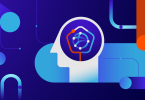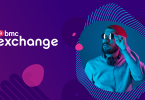In this Run and Reinvent podcast, I chat with BMC Software CIO Scott Crowder about what it takes to reinvent an IT organization to make it world class. Below is a condensed transcript of our conversation.
Allison Cramer: What does run and reinvent mean to you as you think of your organization and your role at BMC?

Scott Crowder: I’d say that run is just sort of table stake today. You need to keep everything up and running, you need to have all the high availability. And it’s really business continuity, disaster recovery, all of the different things that are associated with just running a large-scale enterprise IT organization and IT platforms. And, again, it’s just a day-to-day table stakes, quite frankly.
When you think about reinvent, though, that’s really, how are you going to change the game? What are the strategic initiatives or business initiatives that you’re going to do to try to move the needle forward as far as systems and what your employees interact with or for BMC customers. How do you change the game with regards to the next-generation app or capabilities that you’re offering to your constituents, whoever they might be, whether internal or external.
Allison: Can you give our audience just a little view into what the scale and scope of your role is at BMC and what the size of the organization, how much you’re supporting?
Scott: I like to say I have three jobs here at BMC. There’s really supporting our internal IT needs and really supporting the 6,500+ employees and another couple thousand contractors on a day-to-day basis. So, that’s really giving them a modern workplace in which they can get their jobs done, giving them world-class business systems. Many of our business systems are our Software-as-a-Service, so about 80-85 percent, and it really just keeps going up in our various Software-as-a-Service platforms. So, that’s job No. 1.
No. 2 is, actually, I run a fairly significant Infrastructure-as-a-Service business for our research and development business users. So, these are the people that are really building the software that BMC delivers to our customers. And we operate about three major data centers, and that consists of around 30,000 virtual machines/servers that are R&D grade, basically self-serve and get what assets they need when they need it. It’s all done throughout our cloud management platform of CLM.
And then, lastly is what we call Customer Zero, and that’s essentially – we use every one of our products internally, so we work hand-in-hand with our research and development organization to provide real-time feedback, both on alpha and beta bits, and, alternately, general availability bits associated to products that we offer to our customers. We also do meet with customers occasionally and just talk about our digital transformation, what we’ve done, how we’ve used our products, and just overall strategy and vision.
Allison: Can you comment on any challenges and maybe unexpected positives that you have found as you guys have gone down the SaaS road?
Scott: Well, you’re basically migrating business systems out of your traditional data center and using Software-as-a-Service providers, whoever they may be, whether it’s Salesforce or Okta or the other two or three dozen that we have within our portfolio. And what that causes you to do is really more of an integration process, versus the spoke new development or integrating or customizing on-premise software.
So, really it changes the game from having to develop software to more integration and orchestration of all these different systems interacting. Now, ultimately, the data has to come back here—we are looking at Software-as-a-Service BI platforms right now—but in order to really harvest and mine all the information across all of these different business systems, you have to bring all of that in and have a very powerful business intelligence platform in which to derive business value and understand what’s going on within the business.
Allison: How do you balance the time you spend between running the business and optimizing that and then the reinvention piece? How do you decide how to spend your time and your resources?
Scott: We try to make sure there’s not the sort of bifurcated organization in which people are relegated to money, and some people get to play with all the really cool new toys. We’ve tried to really spread that out across the entire workforce within BMC IT and give people the ability to go and understand these new technologies and be part of both the run and the reinvent. Because I think it’s so important to have that historical view as well as a view towards the future.
So, we don’t split up the organization; we do not have two different levels of IT that some that have the run business and some that have the cool new reinvent. And it’s really a balancing act. You have to make sure that you’re keeping the lights on, for sure, but we try to give that opportunity to all of our different employees. I would say that, overall, we’re probably about 50/50 right now as far as run and reinvent, so, really, regarding terms to mode 1 versus mode 2.
Allison: How does that work for you as far as a research and culture standpoint? Do people embrace that, or some been stand-out stars?
Scott: Probably the most positive aspect of that is the employee retention rate – and understand that we have about 60 percent+ of our employee base in India, which typically has about a 12 percent attrition rate. So, when you look at BMC IT, we’re in the 8-9 percent worldwide attrition rate, which is really world-class, as far as when you have a worldwide IT organization through the Americas and Europe, as well as Asia-Pacific.
Which, that’s very important, and giving people the opportunities to work on cutting-edge technologies and understanding how everything comes together is so important. We try to sort of lead the way with innovative new technologies that we put into our various business systems and infrastructure and data centers, etc., but that’s something that we’re very proud of and something that I think keeps all of our people excited with regards to really learning new, high-tech technologies.
Allison: What advice would you give for folks who are trying to maybe navigate their way through cloud adoption or some of those other pieces?
Scott: We really started our transformation journey about seven years ago, and that started with really what we call consolidating in place. We had 36 labs and data centers, just a lot of M&A over the years that was never really rationalized with regards to the data center and lab footprints. We essentially rebuilt our infrastructure with regards to our production business systems, as well as our research and development Infrastructure as a Service, and reduced those 36 down to four major data centers and actually saved a lot of money (millions of dollars) on an annual basis as well. They produced a megawatt of power, so from a green IT perspective, that was a big deal.
So, really, tighten up what you have first. Let’s get everything consolidated and get a really fresh footprint, and then, in parallel, we really had the SaaS-first initiative. And, again, we’ve been on Salesforce for a long time, probably about eight, actually about 10 years now. But, when you consider all of the other Software-as-a-Service platforms that were coming out, we really started migrating more and more of our technologies to Software-as-a-Service-based platforms.
And what that did is it actually gave us the opportunity to have the best of grade, but also have maximum flexibility with regards to our employees’ interaction with our business systems because they were all basically on the public internet.
So, that’s some of the guidance: consolidation in place first, and then really look at the various SaaS platforms that are out there, and then make sure you have a really good vision going towards the future. But if you have chaos or service availability issues or a scrawl through the data center perspective, it’s hard to focus on what’s important, which is really grabbing business value from these various systems.
These postings are my own and do not necessarily represent BMC's position, strategies, or opinion.
See an error or have a suggestion? Please let us know by emailing blogs@bmc.com.





